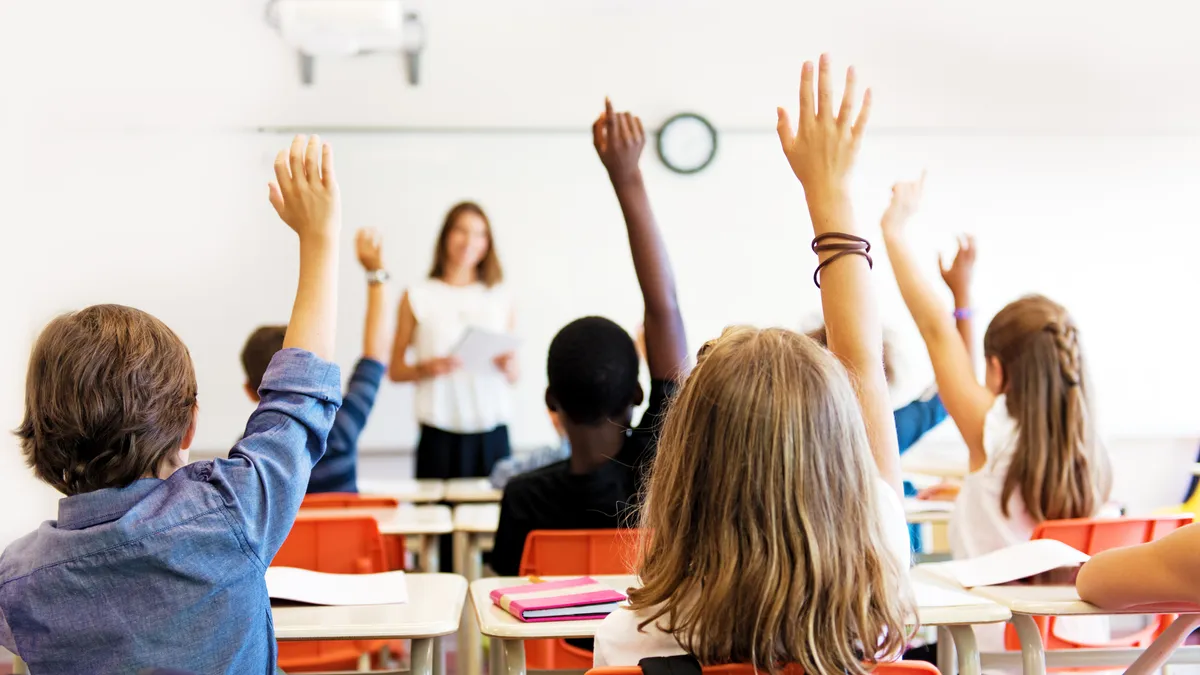Dive Brief:
- Building caring relationships, soliciting student perspectives and having high expectations for students were the three most common practices for encouraging student engagement in the 2021-22 school year, according to a survey conducted by GoGuardian and the University of Southern California Rossier School of Education.
- Of the more than 1,400 teachers surveyed, a large portion said they rarely or never use control, busywork or an emphasis on grades to build student engagement. Looking forward to 2023, respondents said high expectations, teacher enthusiasm and teacher caring will be the most important practices for encouraging students' active participation in learning.
- After several years of disrupted in-person learning, school systems are eager to strengthen school engagement and are devising creative ways to get students and families excited about learning, including through the development of parent universities and ensuring safe and reliable school transportation.
Dive Insight:
More than 75% of districts reported using federal COVID-19 emergency funding for one or more student reengagement strategies to encourage underserved students to transition back to in-person learning, according to a U.S. Department of Education report issued last month.
The pandemic spurred increases in chronic absenteeism and has led to declining enrollment in some areas. According to the National Center for Educational Statistics, public school leaders reported an average 17% chronic absenteeism rate for the 2021-22 school year, and 39% said chronic absenteeism increased compared to the year before.
The U.S. Department of Education announced last fall it was distributing $50 million to states to expand and improve activities that draw middle and high schoolers to campuses, such as extracurricular activities and after-school and summer programming.
The Education Department has also recommended local and state education systems focus on family engagement strategies and partnerships between schools and community organizations to help grow the variety and reach of appealing youth activities.
The survey conducted by GoGuardian, a company that provides approaches for engaging and safe learning environments, and USC Rossier found a high rate of teachers (87%) using engagement strategies such as caring and relationship building, high expectations and enthusiasm.
Other findings include:
- Math and science teachers reported using engagement practice less often than other groups of teachers in 2022. The one exception came in science teachers using more student collaboration than other groups of teachers.
- Although public and private school teachers' reported similar practices, public school teachers reported giving more choices and informational feedback to students, as well as exerting less control over and suppression of student perspectives compared to private school educators.
- Teachers said the most influential factors in adopting engaging methods included their effectiveness, familiarity, and ability to be integrated into current routines. The least influential factor, the teachers said, was professional development.
Report authors hope the findings can "shed light on valuable teacher reflections and engagement strategies that ultimately improve learning outcomes for students,” said Mariana Aguilar, vice president of education at GoGuardian, in a statement.












